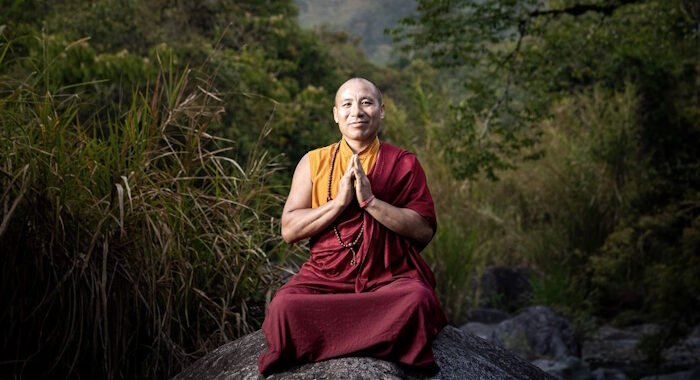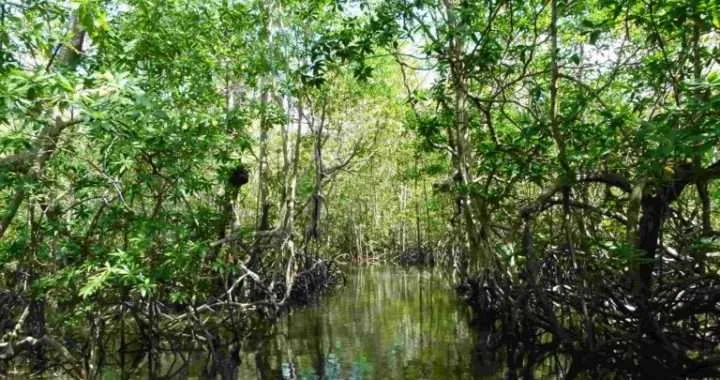Ruby´s Palm Art
Author: Ruby & Steve Fergus
Indigenous cultures treat plants with great respect. Viewed as spiritual entities that required nurturing and soothing. A world where a human being was part of, rather than apart from nature. The craft of basketry was born of necessity – containers to gather and store food. Early sapiens mimicked the forms made by the animal and plant weavers in the natural world they lived intimately with.
When I arrived in Costa Rica in 1997, I had been weaving baskets for 15 years. Basketry was a natural extension of my interest in plants through gardening and wild-crafting in my Southern Oregon Coastal forest home.
Through books and museums, I saw the beautiful and functional baskets of the coastal indigenous cultures from Alaska south. I was inspired to learn about the craft of basketry and the plants used for their creation. However, I didn’t restrict myself to the traditional basket-making plants
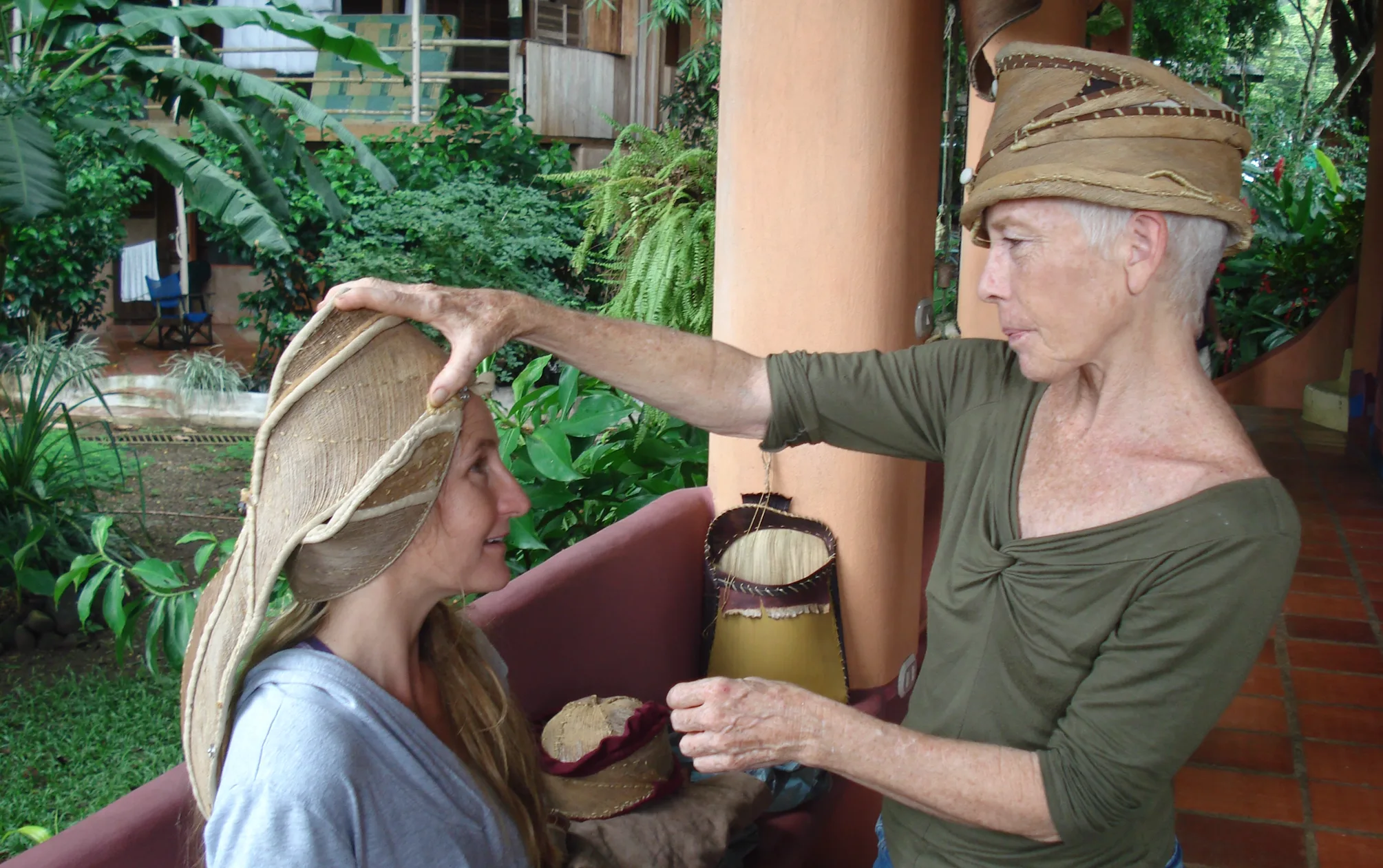
After learning the basic twinning technique, I began experimenting with the plants I found in my immediate environment – blackberry vines, willow, honeysuckle, and even poison oak. So soon after my partner Steve and I, his elderly parents, and our teenage daughter Katherine moved into the little town of Dominical, we began building our home on a lot bordering the Baru River.
When we took breaks from sanding wood and tiling floors, Steve went out to chase waves, and I began my search for tropical plant parts that I could manipulate into containers, baskets, boxes, and lampshades (needed in my ‘bare-bulbed’, half-finished house). After experimental trial and error, I found the perfect material in the discarded sheaths of various palms – royal, lipstick, navidad, and aracae.
Since these palms weren’t introduced into Costa Rica till the late 1800’s they were not used by the indigenous people in their basketry. These sheaths, shed by the palm, are plentiful, renewable, beautiful, accessible for gathering material.
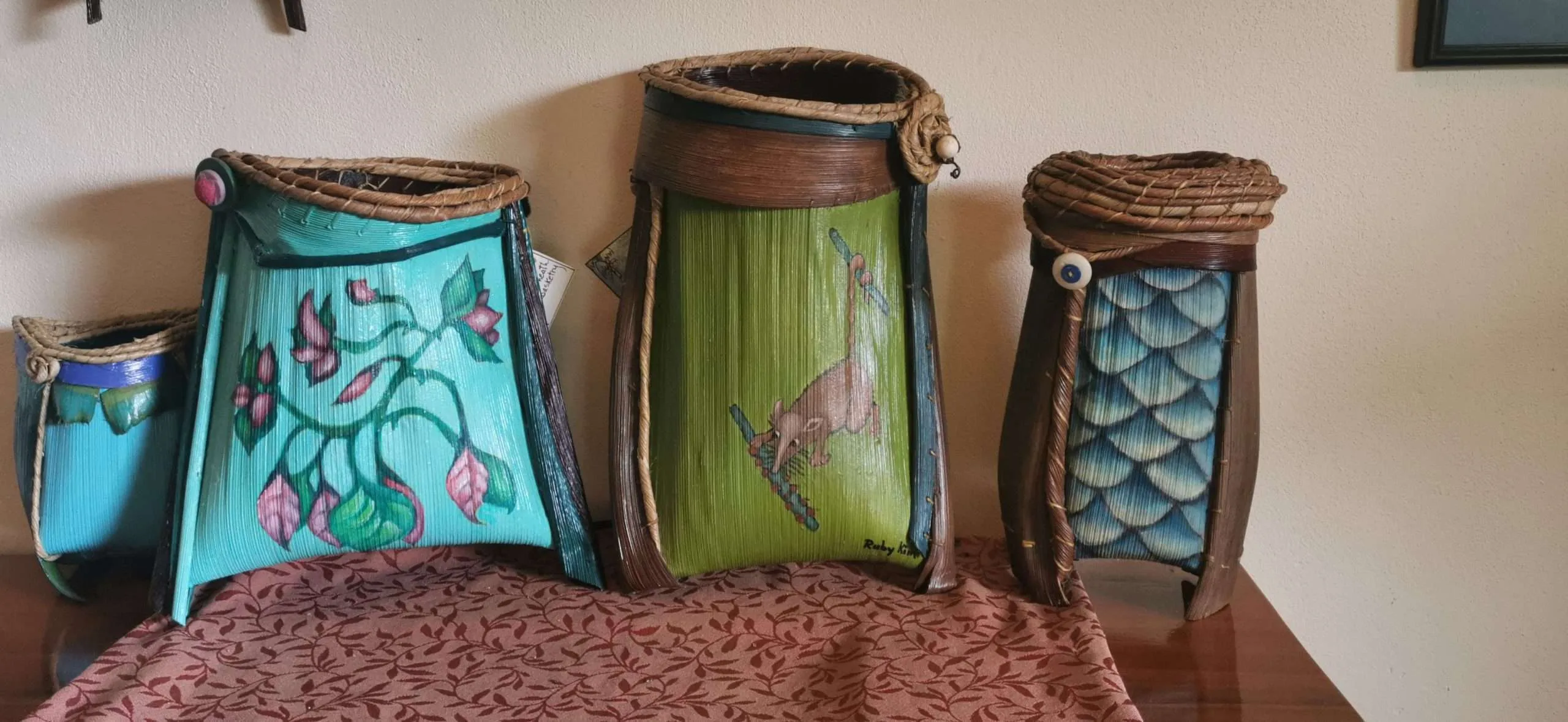
Besides the fun of riding waves and weaving baskets, we needed to get creative with a plan for generating an income. Not retired and too young for Social Security benefits, we fell into a niche we were suited for – being hosts. The apparent facts pointed the way: I knew how to cook from scratch and improvise, having lived a long way from a grocery store.
Dominical had no vegetarian restaurant options. We had a kitchen and a stove and lots of space filled with a few tables and chairs. We played music and wanted to attract musicians to play with us. Also, since we had no door, ‘Bienvenidos’ looked like our theme. We called ourselves Jazzy’s RiverHouse, named after our newborn granddaughter, a place for music and home-cooked food. A cultural center of sorts. So with the help of my daughter, husband, and young friends, we cooked and presented a 5-course meal every Wednesday night serving up to 45 people until I announced the ‘Last Supper’ 8 years later.
So Jazzy’s RiverHouse continues to be a cultural center – an ample space for palm part weaving classes, musical collaborations, and piano lessons.
If learning to make a container or art object out of this plentiful material called a ‘palm sheath’ interests you, contact me to set up a time and date. Since hands-on work is unique to the human-animal, a craft that employs our hands may be essential to our mental health. I love it, and you may want it, too!

Busting Myths About Costa Rica Destination, Free Costa Rica Magazine #99
We’ve recently seen misinformation circulating suggesting that Costa Rica is an expensive destination.
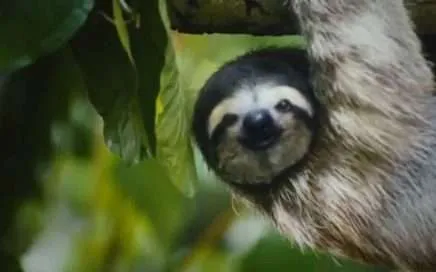
Debunking myths about Costa Rica’s South Pacific destination
There is false information circulating that suggests the South Pacific Costa Rica is an expensive destination
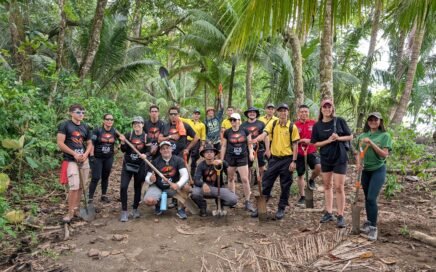
Beach Clean Up in Uvita: Community Spirit in Action at Marino Ballena National Park
Beach Clean Up in Uvita Community Spirit in Action at Marino Ballena National Park Author: Sophie Schindler
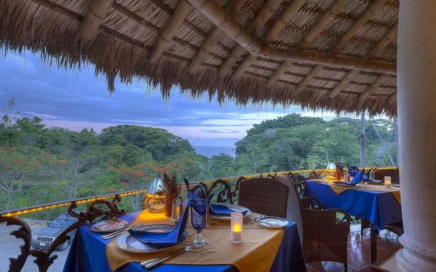
Costa Rica’s First 100% Gluten-Free Gourmet Restaurant
Costa Rica’s First 100% Gluten-Free Gourmet Restaurant La Palapa Restaurant: Indulgence Without Compromise Travelers come to Costa Rica seeking nature, adventure – and memorable dining. At Cuna del Ángel, a boutique hotel nestled in the […]

Adventure Begins Where Comfort Ends: Our Rain-Soaked Snorkeling Tour to Caño Island
What I Learned from Traveling in the Rain or Why a Plastic Cape Can Teach Humility Our Snorkeling Tour to Caño Island

Increasing Biodiversity in the Path of the Tapir Biological Corridor
The area including the Path of the Tapir Biological Corridor in Costa Rica, is one of the few places with increasing biodiversity.
What to do, Where to eat and Where to stay…
South Pacific Costa Rica Beaches
Looking for business directories, maps or other printouts? We’ve got that too!
Dare to Discover and Enjoy…
Check out…
Need help planning your next trip to Costa Rica? We look forward to help you!
Email: carlos@ballenatales.com
Phone: +(506) 8946 7134 or +(506) 8914 1568
